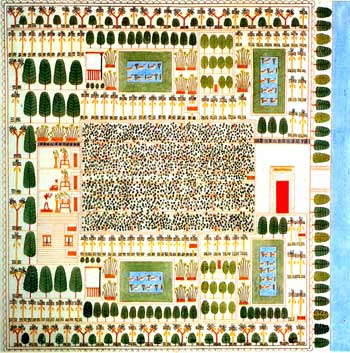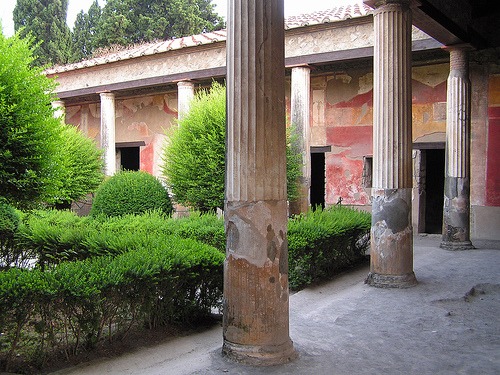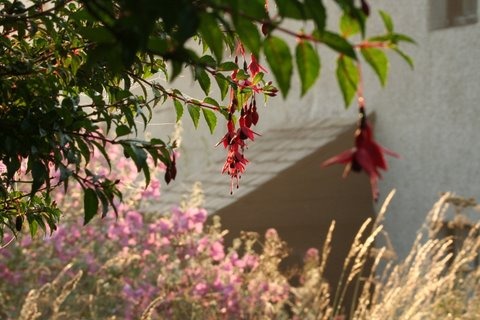
The plan of Sennufer's Garden is the most famous illustration of an Egyptian garden, and the world's oldest accurate plan of a garden
I heard a rumor that Sennufer’s Garden is to be re-created. This is a project I have dreamed of (see note at foot of page on The Domain of Amun) and I believe it is the best tourism investment Egypt could make.
– the project will attract worldwide publicity
– the re-created garden will remind the world that Egypt may well be the country in which the world’s first pleasure garden was made (see blog post Where is the world’s oldest garden?)
– garden visiting is an extremely popular tourist activity, with the Alhambra said to be the most visited garden in Europe
– a new tourist attraction on the East bank in Luxor will take some of the pressure off the ancient monuments on the West bank of the Nile
– a re-created historic garden will fit well with the ambience of the resort hotels being developed on the East bank
I do not know if it has been arranged but the re-created garden is the type of project which could easily attract funding from a hotel chain, an Arab billionaire or from the Aga Khan Historic Cities Support Programme (HCSP) . Since the garden structures would be of mud brick, the cost would not be exorbitant.
The new Sennufer’s garden will be an invaluable contribution to the world’s cultural heritage. If he has a hand in the project, congratulations to Dr. Zahi Hawass (Secretary General, The Supreme Council of Antiquities). A re-creation of the world’s oldest garden would be a wonderful event.
Other Egyptian garden plans survive but Sennufer’s Garden Plan is by far the most sophisticated and in some respects astonishingly modern. See Marie-Luise Gothein’s explanation of the plan of Sennefer’s garden.
[See also: Previous post on Asian gardens and landscapes]





